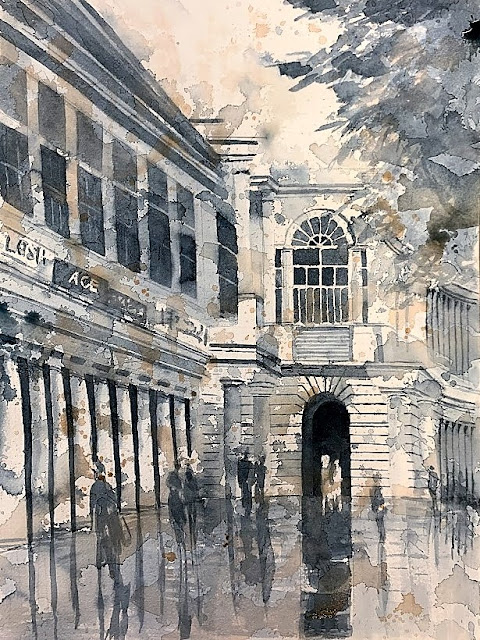Timing
In painting, as in any art, persistent practice is
not working on the object or the image or the performance
alone, but rather, working on yourself, which is the
constant behind all the "product" of your art.
NED DEPEW
It is true. As you evolve, your painting surely evolves as well. It is not just the product of reading, learning, workshops, and skills, rather a deeper indefinable quality that changes you and your art. I am sure meditation contributes to it - to having a better mental state before you start a painting, having a better attitude to the body of work you are producing and your progress, to the patience that comes with meditation, and to the other biggie: letting go of things (a single painting or your general progress) that don't quite pan out as expected.
One thing I struggle with when I paint is timing. For a perfect wet-in-wet, I feel I need to paint fast - on to the next area, and the next, before previous areas dry. However, when I watched Charles Reid work, he worked s o s l o w l y, and took breaks, grunted, and leaned back in his chair, and WAITED for areas to dry before he came back. How, then, was his work so "flowing" and had hard edges only where he wanted them?
What level of mental planning must it require? Do I really need to plan - I will start with a wet orange area here and go into that area before anything dries, and then that, then that, before I lift my brush off the paper? Of course, this thought applies to the Reid's alla prima style, not the layering style of doing a watery wash and then waiting for it to dry before coming back.
I have no idea. I wing it most of the time, and I wish I could do more predictable, consistent work. A deeper study is required.
Here is a loose, quick and watery study of my paintbrush jar which attempts to organize my workspace a bit. I was inspired to try walnut ink (a very pretty color) and do a contour drawing after reading Brenda Swenson's blog.




Comments
Post a Comment